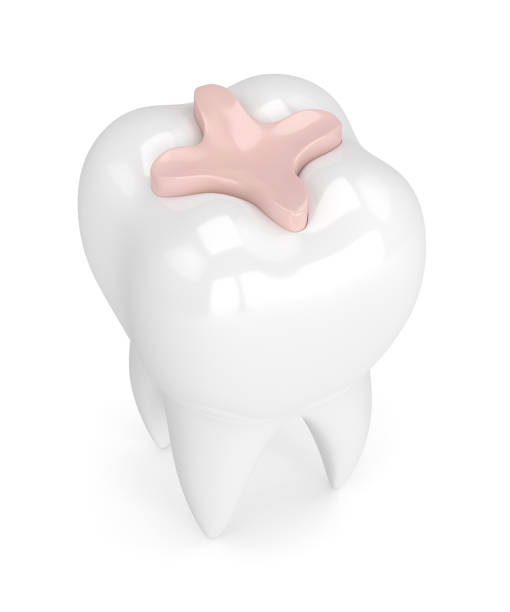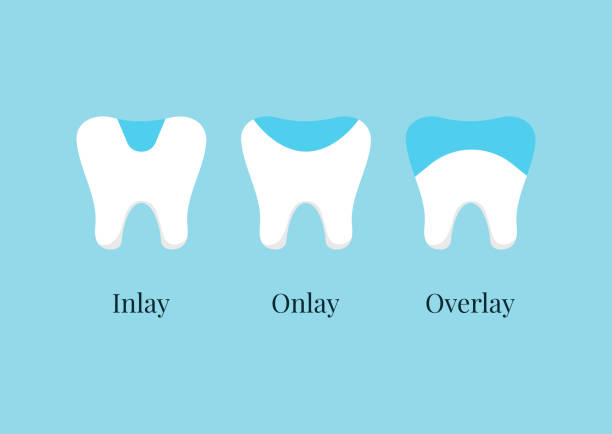When the biting surface of a bad tooth needs a restoration, the best choice is often an inlay or onlay made of resin. The resin material is a mixture of acrylic resin and microscopic particles that is shaped and cured for strength.
What are inlays and onlays?
Inlays and onlays are used in molars or premolars, when the tooth has sustained too much damage to support a basic filling, but not so much damage that a crown is necessary. The main point of comparison between them is the amount and part of the tooth that they cover. An inlay will cover the chewing surface between the cusps and include the pits and fissures of a tooth, while an onlay will require covering one or more cusps.
Traditionally, gold has been the material of choice for inlays and onlays. But in recent years, porcelain has been more and more popular due to its durability and color, which may be able to match the natural color of the teeth.
What are the differences between inlays and onlays?
Inlays
With an inlay, the space is filled with a single, solid piece that is normally fabricated in a lab and they are typically made out of a material like gold or ceramic. To prevent further decay, the inlay must be made precisely to the shape and size of the empty space. Otherwise, food and bacteria will enter the space. The benefit of an inlay is that it does not shrink as much as a filling does after it is inserted, so there is less likely that the restoration failing due to this factor, or creating a gap between the filling and the surrounding tooth structure. An inlay should last longer since it provides a tougher and theoretically more durable surface for use when chewing.

Onlays
An onlay is related to an inlay and similar to fillings and crowns in several aspects.
These are more major single-tooth restorations, reserved for larger areas of decay where an inlay won’t work due to the amount of tooth structure that must be removed. The primary distinction between an onlay and an inlay is that an onlay will cover a cusp of the tooth, while an inlay only fills the area between the cusps. The cavity is still drilled with diamond burs from the tooth, and an onlay is fabricated to the exact size and shape of the space.

The procedure for inlays and onlays
Both Inlays and onlays are precision crafted in a dental laboratory, so it may take two or more appointments for patients to restore the tooth with a resin inlay or onlay.
The first dental appointment:
First, numb a portion of the patient's mouth with a local anesthetic.
Second, after the patient's tooth is numb, remove the decayed or damaged portion with diamond burs to prepare the tooth for the inlay or onlay.
Third, take an impression of the patient's tooth for the next step, which is to submit it to a lab for the creation of the permanent restoration.
Last, protect the patient’s tooth until the next appointment with an inlay or onlay.
The second dental appointment:
Remove the temporary dental sealant, clean the tooth, place the restoration, and ensure a good fit.
After checking the bite, and permanently bond the inlay or onlay to the patient’s tooth and polish to a smooth finish to match the natural teeth.

Inlay & Onlay Preparation Clinic Kit
https://www.burdental.com/for-clinic/clinic-kits/4104



